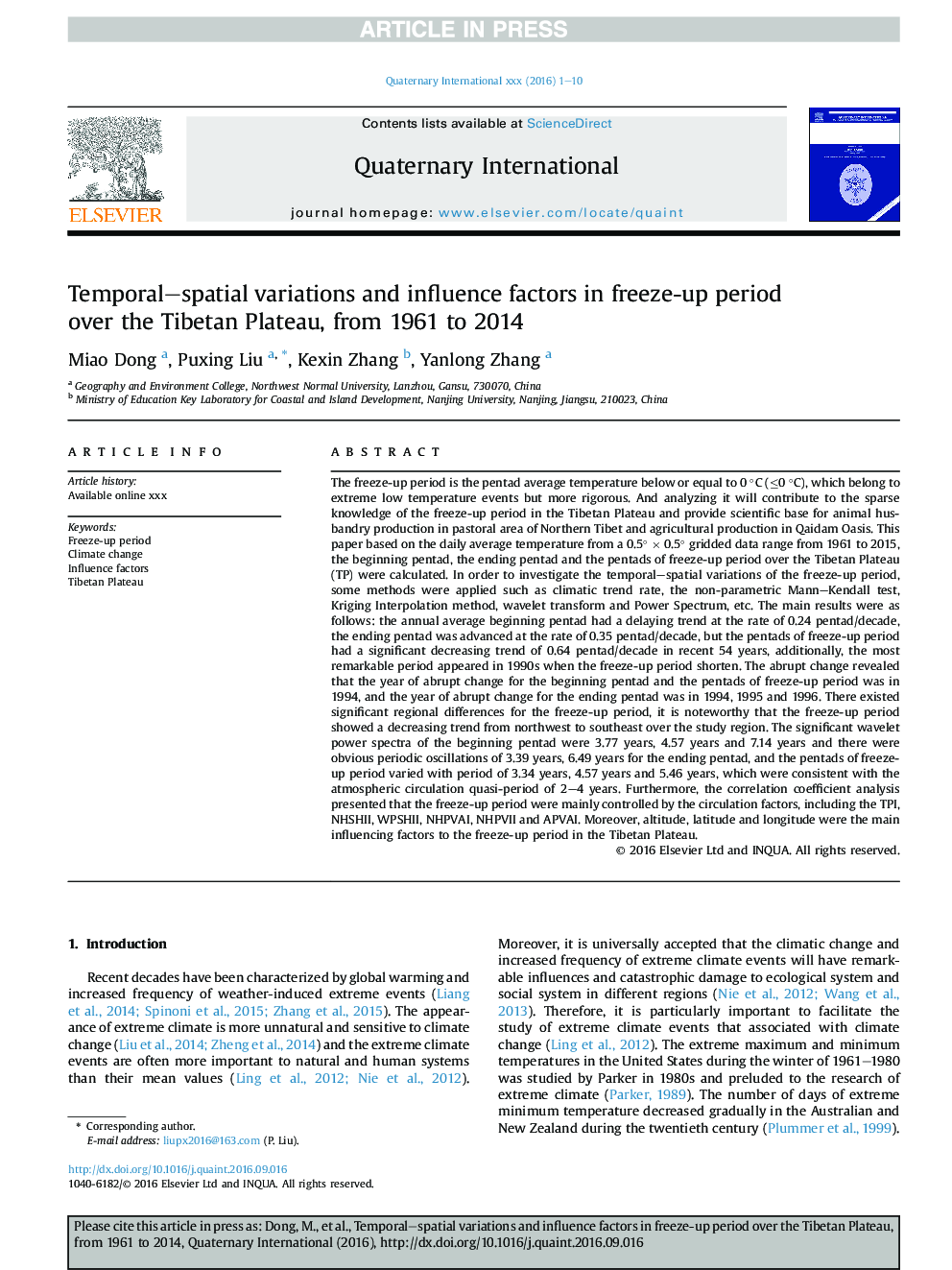| کد مقاله | کد نشریه | سال انتشار | مقاله انگلیسی | نسخه تمام متن |
|---|---|---|---|---|
| 5113390 | 1377929 | 2017 | 10 صفحه PDF | دانلود رایگان |
عنوان انگلیسی مقاله ISI
Temporal-spatial variations and influence factors in freeze-up period over the Tibetan Plateau, from 1961 to 2014
ترجمه فارسی عنوان
تغییرات زمانی-فضایی و عوامل تاثیر گذار در دوره یخبندان بیش از قطعه تبتی، از 1961 تا 2014
دانلود مقاله + سفارش ترجمه
دانلود مقاله ISI انگلیسی
رایگان برای ایرانیان
کلمات کلیدی
دوره ی فریزر تغییر آب و هوا، عوامل تاثیرگذار، تبت پلاتو،
موضوعات مرتبط
مهندسی و علوم پایه
علوم زمین و سیارات
زمین شناسی
چکیده انگلیسی
The freeze-up period is the pentad average temperature below or equal to 0 °C (â¤0 °C), which belong to extreme low temperature events but more rigorous. And analyzing it will contribute to the sparse knowledge of the freeze-up period in the Tibetan Plateau and provide scientific base for animal husbandry production in pastoral area of Northern Tibet and agricultural production in Qaidam Oasis. This paper based on the daily average temperature from a 0.5° Ã 0.5° gridded data range from 1961 to 2015, the beginning pentad, the ending pentad and the pentads of freeze-up period over the Tibetan Plateau (TP) were calculated. In order to investigate the temporal-spatial variations of the freeze-up period, some methods were applied such as climatic trend rate, the non-parametric Mann-Kendall test, Kriging Interpolation method, wavelet transform and Power Spectrum, etc. The main results were as follows: the annual average beginning pentad had a delaying trend at the rate of 0.24 pentad/decade, the ending pentad was advanced at the rate of 0.35 pentad/decade, but the pentads of freeze-up period had a significant decreasing trend of 0.64 pentad/decade in recent 54 years, additionally, the most remarkable period appeared in 1990s when the freeze-up period shorten. The abrupt change revealed that the year of abrupt change for the beginning pentad and the pentads of freeze-up period was in 1994, and the year of abrupt change for the ending pentad was in 1994, 1995 and 1996. There existed significant regional differences for the freeze-up period, it is noteworthy that the freeze-up period showed a decreasing trend from northwest to southeast over the study region. The significant wavelet power spectra of the beginning pentad were 3.77 years, 4.57 years and 7.14 years and there were obvious periodic oscillations of 3.39 years, 6.49 years for the ending pentad, and the pentads of freeze-up period varied with period of 3.34 years, 4.57 years and 5.46 years, which were consistent with the atmospheric circulation quasi-period of 2-4 years. Furthermore, the correlation coefficient analysis presented that the freeze-up period were mainly controlled by the circulation factors, including the TPI, NHSHII, WPSHII, NHPVAI, NHPVII and APVAI. Moreover, altitude, latitude and longitude were the main influencing factors to the freeze-up period in the Tibetan Plateau.
ناشر
Database: Elsevier - ScienceDirect (ساینس دایرکت)
Journal: Quaternary International - Volume 444, Part A, 15 July 2017, Pages 115-124
Journal: Quaternary International - Volume 444, Part A, 15 July 2017, Pages 115-124
نویسندگان
Miao Dong, Puxing Liu, Kexin Zhang, Yanlong Zhang,
